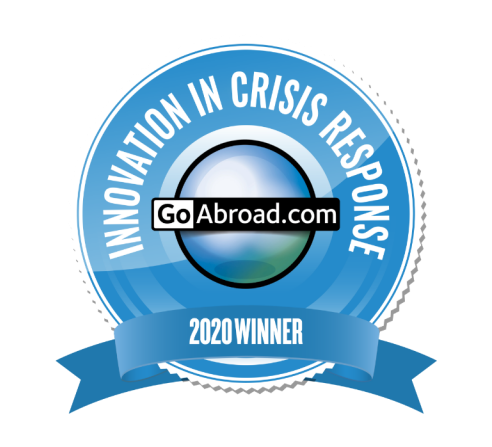SIT safely repatriates 920 students in massive global evacuation effort
Publication Date: March 31, 2020
Publication Location: Brattleboro, Vermont
Contact: Kathryn Schoenberger | [email protected]
President Sophia Howlett: 'It took a village'

Update: In June, GoAbroad recognized School for International Training with its 2020 Innovation in Crisis Response Award for Operation Bring Our Students Home.
BRATTLEBORO, Vermont – School for International Training has successfully repatriated more than 900 study abroad and graduate students in an exhaustive international mobilization effort launched on March 15 in response to the COVID-19 pandemic.
The relocation of 914 undergraduate and six graduate students — many of them from remote locations — means that all SIT students in the field who intended to return home have done so. Nine study abroad undergraduate students signed waivers and chose to remain in country.
When SIT made the call to close all international program locations, students were on 56 undergraduate study abroad and two graduate programs around the world, including students in the Amazon and the Himalaya and others about to leave by boat for Antarctica.
The two-week, round-the-clock evacuation effort, informally dubbed “Operation Bring Our Students Home,” began as international borders and flight corridors were unexpectedly shutting down as countries imposed a range of measures to try to keep the novel coronavirus at bay.
“It took a village — in this case a global village — to move us forward,” said SIT President Dr. Sophia Howlett. “Everybody at SIT has been touched by this in some way and many people across the entire organization participated in the evacuation process.”
The study abroad students are now migrating to SIT’s online platform, where they can complete their academic credit requirements without jeopardizing their enrollment status or financial aid.
The evacuation drew upon expertise across the organization, including global security, diplomatic, and development and exchange experts at World Learning, Inc., SIT’s parent organization, who joined forces with SIT study abroad and graduate academic, admissions, student affairs, university relations and communications teams. It was led by Howlett and World Learning Inc. CEO Carol Jenkins.
“We have so many unique programs that we can turn to for strength,” said Jenkins, who as head of World Learning, Inc., leads nearly 200 international education, development and exchange programs. “This operation really underscored the ways we can leverage our different capacities to help us get through difficult times like this.”
Jenkins and Howlett thanked Vermont Sen. Patrick Leahy and other members of Congress for working closely with the organization to get SIT students on U.S. evacuation flights.
Howlett also extended her gratitude to SIT’s more than 200 college and university partners for working with SIT to bring the students safely home.
As students scrambled to find flights, World Learning and SIT fielded ad hoc travel teams to help them re-book or find new tickets. Staff and faculty, including academic deans and program chairs, stepped in for day and night travel shifts. Howlett and other members of the World Learning and SIT executive teams also took shifts on the travel hotline as pressures mounted to relocate students before borders closed.
The SIT Student Affairs team members have fielded calls for more than a month as the crisis emerged and evolved, and many of SIT’s academic directors (ADs) led their students to city centers from distant field locations, found them safe accommodations, transported them to airports individually and in groups as flights became available, and stayed engaged with students in group chats as they traveled.
“These ADs kept their students calm and moved them forward from the beginning of the process until the very end,” said Howlett.
Student groups in Peru and Samoa were among the last to board flights out. In Peru, borders closed on March 16 leaving 19 SIT students with their homestay families near Cuzco. The students ultimately were evacuated on two U.S. government flights on March 24 and 25.
For SIT’s 15 Samoa students, restrictions in Fiji, New Zealand, and other transit points made departure extremely difficult. Ultimately, those students left on March 25 on one of only four commercial one-way flights the Samoan government allowed to fly to American Samoa. They stayed for two days there before leaving for Honolulu and onward to Los Angeles before connecting to their final destinations. The last of those students arrived home on Saturday night, March 28, bringing the SIT emergency evacuation operation to a formal close.
